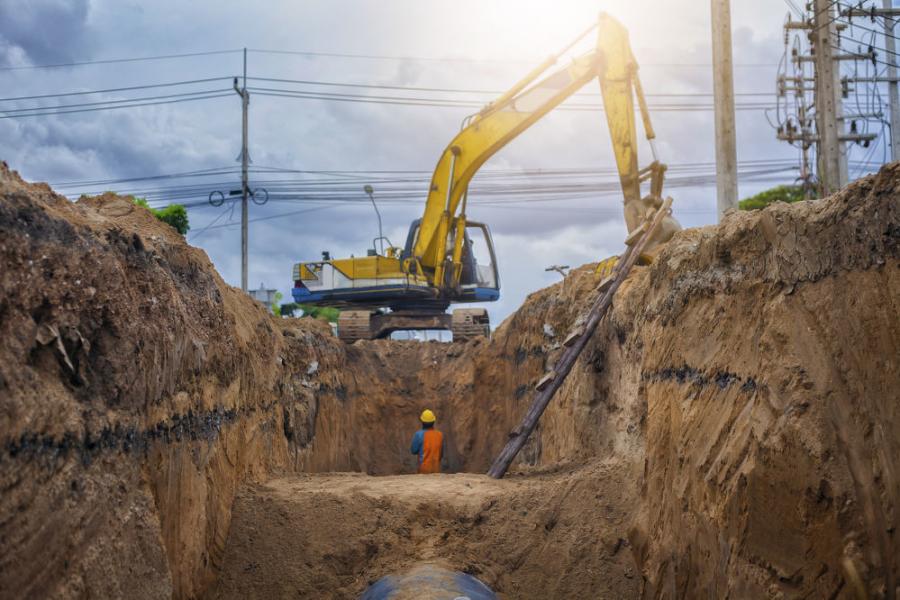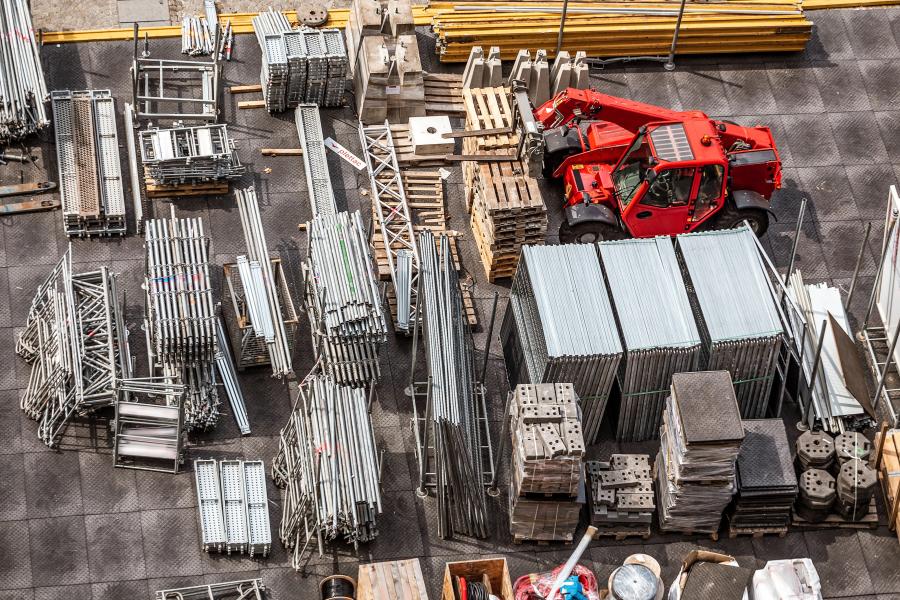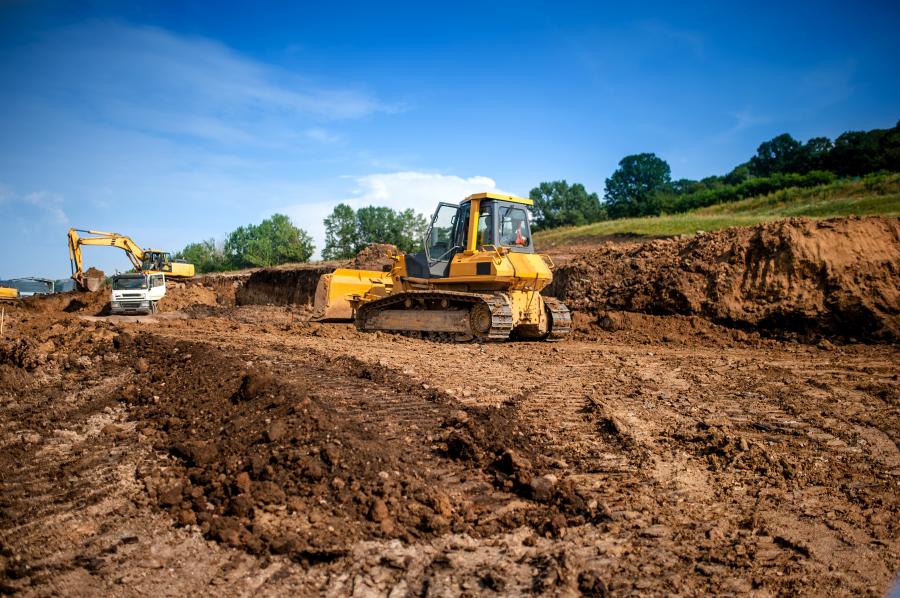Contractors should monitor costs and delivery schedules for materials, and communicate with owners, both before submitting bids and throughout the construction process.
The construction industry is doing its level best to deal with a rare triple punch: Unusually high and rising materials costs, a massive supply-chain bottleneck and decreasing demand for projects. The ripple effect of these challenges could weaken the contractor community, but a heavy dose of cooperation and communication is helping many to navigate the challenges.
Cooperation and communication are exactly what the AGC's Ken Simonson suggests will help reduce the damage from "exceptionally steep and fast-rising costs for a variety of materials, compounded by major supply-chain disruptions and stagnant or falling demand for projects — a combination that threatens the financial health of many contractors."
No single solution will resolve the situation, Simonson, association economist, wrote in the AGC's latest Inflation Report. But he believes there are steps that government officials, owners and contractors can take to lessen the pain.
"While contractors cannot unclog ports or rescind tariffs, they can provide project owners with timely and credible third-party information about changes in relevant material costs and supply-chain snarls that may impact the cost and completion time for a project," he said.
For their part, owners "can authorize appropriate adjustments to design, completion date and payments to accommodate or work around these impediments," he added.
Pinpointing the Problem
The adverse effect of pockets of construction expansion on the supply chain is creating headaches. "As construction projects continue to rise, general contractors' needs for materials and supplies have also increased, which has created a surge of demand that's been weighing on the supply chain," said Eric Collin, owner and president of Firmo Construction, Sarasota, Fla., in an article he wrote in the Tampa Bay Business Journal.
"We all know well that the availability and prices of many of the materials used by construction contractors have been affected dramatically since the start of the COVID-19 pandemic," wrote Mike Sanders, bond manager of Old Republic Surety.
"Many materials are difficult to find, and when they are found, they are at extremely high prices as compared to the cost before the pandemic," he wrote for Insurance Journal. Some of the materials most noticeably affected include lumber, products made from copper and steel and plumbing fixtures.
"While other unique factors contribute, the biggest culprits for the volatility are the COVID lockdowns, COVID restrictions, business closures, higher-than-expected demand and a reduction of the available workforce in the industries that produce and distribute these materials," he said, adding that some traditionally off-the-shelf materials are taking weeks or even months for delivery.
Contractors may be feeling a big pinch, especially on projects originated prior to the pandemic, said Sanders. In many cases, he added, materials suppliers will not lock in their quoted prices for the amount of time the contractor needs to ensure the prices they ultimately pay do not exceed those contemplated at the time their bid was made.
"Some suppliers will not lock prices in for any longer than a week, and some contractors report that certain suppliers are unwilling to lock prices in for more than a day."
Running an End-Around
Simonson of AGC said though nobody welcomes a higher bill, the alternative of having a contractor go out of business because of impossible costs or timing is likely to be worse for many project owners.
For projects that have not been awarded or started, he suggests owners start with realistic expectations about current costs and the likelihood of increases. They should provide potential bidders with accurate and complete design information to enable bids that minimize the likelihood of unpleasant surprises for either party.
Owners and bidders may want to consider price-adjustment clauses that would protect both parties from unanticipated swings in materials prices, said Simonson.
"Such contract terms can enable the contractor to build in a smaller contingency to its bid, while providing the owner an opportunity to share in any savings from downward price movements [which are likely at some point, particularly for long-duration projects]," he said.
The parties also may want to discuss the best timing for ordering materials and components. Buying items earlier than usual can provide protection against cost increases, suggested Simonson.
"But purchase before use entails paying sooner for the items; potentially paying for storage, security against theft and damage and the possibility of design changes that make early purchase unwise."
AGC has long encouraged federal trade policy officials to end tariffs and quotas on imported products and materials. The association maintains that with many U.S. mills and factories already at capacity, bringing in more imports at competitive prices will cool the overheated price spiral and enable many users of products that are in short supply to avoid layoffs and shutdowns.
"Officials at all levels of government should review all regulations, policies and enforcement actions that may be unnecessarily driving up costs and slowing importation, domestic production, transport and delivery of raw materials, components and finished goods," Simonson said in his report.
"Owners need to recognize that significant adjustments are probably appropriate regarding the price or delivery date of projects that were awarded or commenced early in the pandemic or before, when conditions at suppliers were far different."
And contractors need to closely monitor costs and delivery schedules for materials and to communicate information with owners, both before submitting bids and throughout the construction process, said Simonson. "Materials prices do eventually reverse course. Owners and contractors alike will benefit when that happens."
Communication is key, said Carl Pebworth and Rachael Stack of the law firm Faegre Drinker Biddle & Reath. It's crucial for owners, contractors and other "downstream" construction partners to contemplate and address concerns from the beginning, they said.
"With respect to material price increases, it may be as simple as the parties recognizing potential volatility and negotiate a mutually acceptable price escalation clause."
This approach, they said, should include identifying specific materials or material categories that may be at risk for significant volatility. "If possible, identifying suppliers for these ‘at-risk' materials that will provide fixed pricing for a fixed period of time."
Define volatile pricing, suggested Pebworth and Stack in an article for JD Supra, and pre-order materials when it's feasible. Account for storage costs, or course. Anticipate the potential impact for future projects under current conditions.
Their other suggestions: Discuss use of a contingency line item for raw materials and consider bilateral flexibility. "If the owner shares the risk of price increases, then the owner should also share the benefit if prices come down unexpectedly," they said.
"Unanticipated material delivery delays and product shortages will require similar flexibility. A shortage of material transportation resources may be a long-lasting outcome in the post-pandemic construction economy."
At negotiation time, owners, contractors, subcontractors and suppliers need to consider all these issues in the wake of COVID-19 and other unanticipated events that have occurred over the past year, said the attorneys. Price volatility and related delivery delays of construction materials will likely remain for the foreseeable future.
"As with many issues, open and honest communication during contract negotiations surrounding issues that may arise on a project not only fosters a good working relationship, it can also avoid unnecessary costs, delays and disputes on the back end of a project," they added.
Reframing the Outcome
AGC reported that another round of price increases and supply-chain disruptions have resulted in further hardships on contractors. They're not only driving up construction costs, but slowing down progress on projects.
Additionally, more than three-fourths of construction firms have indicated projects are being postponed or canceled because of unavailable materials or cost overruns, while only one out of five firms reported winning new work in the previous two months.
Circumstances like these are catalysts for unfavorable outcomes in the construction industry, said Collin of Firmo Construction. As a result, many local general contractors are proposing project bids with higher estimates. The general conclusion is that contractors are trying to balance out losses due to the pandemic, leading to a hike in cost.
"In actuality, however, it's quite the opposite," he said. "Contractors are trying to balance the surge in need for construction services while accounting for the matter of not only rising material costs and material delays, but also labor shortages in the industry."
Reimagining supply chains could be a way to build resilience and head off disruptions, said Collin. He laid out solutions contractors can implement to diminish the negative effects of the industry's perfect storm.
"Some ways contractors can address these obstacles include introducing innovative methodologies and expanding their thinking beyond the construction site," he said.
One technique he favors is prefabrication. The strategy utilizes components made off site and assembles them together on site. It can be applied to full structures as in modular construction, or to materials such as cross-laminated timber.
Collin pointed out that at a time when cost is critical, reimagining supply chains is another viable solution. "One way is to prepare for disruptions. Now is the perfect time for companies to build resilience into their operations to be better prepared for any type of future disruption," he said.
"There's an ideal opportunity to build that resilience on multiple fronts if industry leaders are restructuring their value chain from end to end," he added.
These opportunities range from reevaluating business models and building efficient industrial supply chains, to building manufacturing and distribution facilities to help alleviate vulnerabilities the pandemic brought to light in the just-in-time supply chain, he said. CEG
Today's top stories























